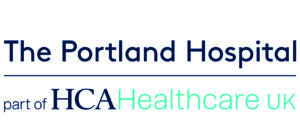Why is my child having ‘Reimplantation of ureter(s)?
Your child has been diagnosed with a condition which affects the free flow of urine from the kidneys to the bladder. This may be:
• ‘Vesico-ureteric reflux’ (VUR or ‘reflux’) which means that urine back tracks up the ureters towards the kidneys.Or
• An obstruction at the point where the ureter joins the bladderThese problems can cause urine infections which can damage kidneys. Reimplantation of ureters is an operation to alter the position of the ureter as it enters the bladder. The ureter is the tube that takes urine from the kidney into the bladder.
Before admission to hospital
Your child will have undergone different scans (such as ultrasound scans and also nuclear medicine scans which identify the function of the kidneys) and investigations (such as blood tests).
Preoperative assessment:
Children will usually be reviewed 4-7 days prior to admission in our ‘pre-operative assessment clinic or by our urology CNS.’ The purpose of the clinic is to ensure you and your child are fully informed and to ensure your child’s hospital stay is as straight forward and seamless as possible. At the pre-operative assessment clinic your child will be examined, a urine specimen will need to be provided and sometimes blood tests will be needed. The operation will be explained to you in detail and a consent form provided for you to sign on that day if the consultant is there or the day of the surgery.
If your child becomes unwell:
If your child has a cold, cough or illness such as chicken pox the operation will need to be postponed to avoid complications. Please telephone us (the telephone number is provided at the end of this leaflet) to discuss, prior to coming to hospital.
Starvation times:
Your child will not be able to eat and drink before the operation. Specific advice about this will be given on the day before your child’s surgery by the consultant PA or our pre-assessment nurses.
What happens when my child is admitted to hospital?
You will be asked to bring your child to one of our children’s floors, on the day of surgery. When you arrive you will be seen by our paediatric nursing staff plus you consultant and the anaesthetist.
A parent will be able to accompany your child when she/he goes to the anaesthetic room to go to sleep for the operation and also be present in the recovery area when she/he wakes. A bed will be provided for a parent to stay next to your child’s bed.
The operation:
A cut is made along the bikini line so that the bladder can be seen. The position at which the ureter(s) enters the bladder is altered. Tubes to drain the urine are left in place whilst the operated area heals (see below).
The wound will be closed with dissolvable stitches and sometimes paper tapes (steri-strips) or glue are also applied. Your surgeon will discuss this in detail with you before you sign the consent form.
What are the complications/risks of this operation?
Complications are rare. Rare complications include:
After the operation:
How long will my child stay in hospital for and can I stay with him/her?
The length of stay will depend on each individual child but the average length of stay is five to seven days. A parent will be able to remain resident on the ward in a bed at the side of the child’s bed.
Your child will be able to go home when:
How do I look after my child at home?
Follow up:
For further information please contact:
We hope that you find this information helpful. If you have any questions or problems either before or after the surgery, please do not hesitate to contact Clinical Nurse Specialist, Paediatric Urology on 020 7580 4400, Ex-10838 (09:00 – 17:00 Monday to Friday) or email at: [email protected]
For Out of hours: Contact our Paediatric Site Practitioner via the switchboard on: 02075804400 ex 10843
Disclaimer Whilst this leaflet aims to provide you with useful information, it must be noted that it should only act as a guidance. Should you have any further concerns about this procedure, it is advisable that you discuss them with your Consultant.
